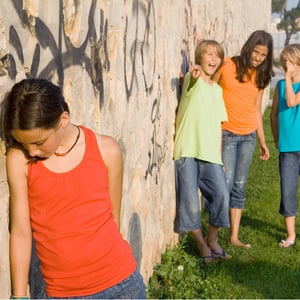
Bullying is in the news after an eight-year-old Gauteng girl has died after being beaten and kicked by three school bullies.
For thousands of children, the school is a battleground where they are subjected to physical or verbal abuse by fellow students. The issue has received much media attention in the last decade and many anti-bullying campaigns have made their way onto television screens and onto social media sites.
Bullying is an age-old and worldwide problem and only one form of school violence. Because of the misperception that bullying is just a part of the process of growing up, many children keep quiet about abuse and many educators fail to take action. This is in spite of the fact that it can have negative lifelong social, emotional, psychological and educational consequences, both for perpetrators and for their victims.
Bullying in South Africa
Until recently, not much was known about the extent and type of bullying in South African schools. A study conducted in Gauteng found that 60,9% of the 207 study participants reported that they were victimised during the 2002 school year.
In another study, Corene de Wet of the University of the Free State surveyed 339 learners in Free State secondary schools. She found that only 29,2% and 32,15% of the school children surveyed, had never been exposed to direct or indirect verbal abuse respectively. As many as 32,45% had been physically abused by fellow learners.
Read: more on cyberbullying
In a separate study on educators' experience of bullying, she not only found that educators frequently witnessed bullying, but that they themselves were often abused by learners.
Bullying can have serious consequences for both the victim and the perpetrator. Victims often refuse to go to school or steer clear of certain areas of the school terrain. They struggle with poor self-esteem and can become depressed and withdrawn. In serious cases of bullying, victims have committed suicide or have even murdered their victims.
Some studies have shown that bullying also has harmful long-term effects on the bully. Bullies often become involved in criminal activies later in life and struggle to form positive relationships with others.
What is bullying?
Bullying can be defined as intentional, repeated, systematic hurtful acts, words or other behaviour by an individual or individuals against another individual or individuals.
It can take many forms. Common examples include:
- Physical bullying includes punching, poking, strangling, hair-pulling, beating, biting, excessive tickling and direct vandalism.
- Verbal bullying includes such acts as hurtful name-calling, persistent teasing, gossiping and racist remarks.
- Relational bullying occurs when the victim is deliberately excluded from activities.
- Emotional bullying includes terrorising, extorting, defaming, humiliating, blackmailing, rating/ranking of personal characteristics such as race, disability or ethnicity, manipulating friendships, ostracising and peer pressure.
- Sexual bullying includes many of the above as well as exhibitionism, sexual positioning, sexual harassment and abuse involving actual physical contact and sexual assault.
Helping the victim
According to De Wet, many victims are hesitant to tell parents or educators that they are being victimised for fear of retaliation by the bully or other classmates who may regard the disclosure as tale-telling. If the abuse is serious or if it has taken place over a long time, many hide it from their parents for fear of upsetting them. She found that most learners prefer to take fellow learners rather than adults into their confidence.
Many witnesses also ignore and keep quiet about abuse for fear that they themselves might become victims. As a result, educators and parents often don't know that someone is being bullied.
Several other researchers and educators worldwide encourage schools to promote an atmosphere of caring by adopting an anti-bullying programme. Educators, learners and parents should be involved in compiling and implementing the programme. The aims of the programme should be to:
- raise awareness
- improve peer relationships
- encourage learners to disclose abuse and to stand up against bullies
- develop rules to prevent bullying
- decide on disciplinary steps
Is your child being bullied?
Look out for these warning signs:
- Coming home with cuts and bruises
- Torn clothes
- Asking for stolen possessions to be replaced
- "Losing" dinner money
- Falling out with previously good friends
- Being moody and bad tempered
- Being quiet and withdrawn
- Wanting to avoid leaving the house
- Aggression with siblings
- Doing less well at schoolwork
- Insomnia
- Anxiety and/or depression
- Ilse Pauw, Health24 (updated July 2010)
References:
De Wet NC 2006. Free State educators' experiences and recognition of bullying at schools. South African Journal of Education, 26(1):61-73.
De Wet NC 2006. Bullebakkery - almal se probleem. Tydskrif vir Geesteswetenskappe, 64(1):87-100.
Neser J, Ovens M, Van der Merwe E, Morodi R & Ladikos A 2003. Peer victimization in schools: the victims. Crime Research in South Africa, 5(1). Available url.: http://www.crisa.org.za/
Neser J, Ovens M, Van der Merwe M, Morodi R, Ladikos A & Prinsloo J 2004. The victims of bullying in schools. Acta Criminologica, 17(3):28-47.




 Publications
Publications
 Partners
Partners









